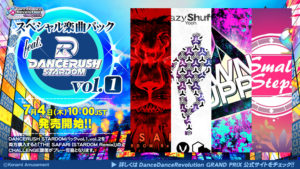
In a game like DanceDanceRevolution where you need to watch and follow what is shown on the screen, reading is fundamental. That is, being able to read notes on the screen as patterns. As you progress through the game and bump up the difficulty, you’ll notice that you need to pay attention to a lot more arrows coming up all at once. This guide will break it all down, identifying the most common patterns and showing you how to execute them.
STEP
One single solitary step, separated from its brethren, the most basic of patterns. A single arrow in any direction is a step. When multiple steps are strung together in some consecutive order, more complex patterns are formed.

JUMP
A jump is two simultaneous steps that come in six different variations in DDR. They are done with two feet hitting both steps at the same time. If you’re feeling ambitious, corner jumps can be done with one foot hitting two arrows at once.

FREEZE
A freeze arrow is performed by stepping and holding down on a note until the freeze portion ends. You may often find yourself holding down an arrow with one foot while hitting steps with the other. They were first introduced in DDRMAX.
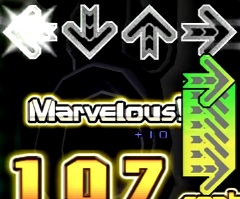
TRIPLES
There isn’t an official name for this pattern, but it’s a pattern that is very common in nearly all DDR charts. They are sets of three notes, requiring you to alternate your feet for each arrow.

STAIRCASES
A staircase pattern comes in four flavors, hitting all arrows once going from left to right or right to left. When shown on the screen, the pattern looks like a set of stairs, hence the name staircase. It is a technique that is fairly easy to pick up because of its visual simplicity.
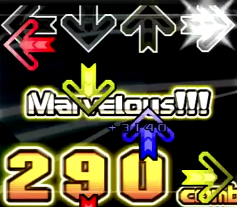
CANDLES
The origin of the name “candle” to describe this pattern is due to how if you were to place a candle on the center panel, your foot would knock it over as it passes the center panel. The person who coined this term is currently unknown, but the earliest known mention of the term was found in an Aaron In Japan forum post in 2004.
They come in four variations and take a bit more movement than other patterns to execute because of how they make your foot on the first step go to the opposite panel on the third step, causing your foot to travel the greatest distance. Examples of a candle pattern are Up Left Down and Down Right Up.

CROSSOVERS
This is a technique that not everybody picks up the first time. Most players end up double-stepping the pattern (covered later) because of the pattern’s direction and naturally, they use the same foot associated with that direction. A crossover is where a pattern causes either your left foot to step on the right arrow, or your right foot to step on the left arrow. The most common and basic crossover pattern is a sideways candle, i.e. Left Down Right, Left Up Right; and reverse. There are many other variations of crossovers that make your body twist and turn in ways you’ve never felt before. Make a conscious effort to practice crossing over, as these patterns come up very often in higher level charts and it will be highly beneficial to learn in the long run.
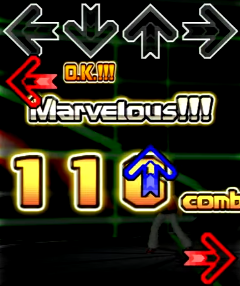
GALLOPS
Think of the sound of a horse’s gallop. That should be what it sounds like when you perform a gallop. A gallop is two different arrows in quick succession, typically 1/16th note apart. Fairly difficult to time properly, so be sure to practice this pattern a lot.

DRILLS
Drills are at least five consecutive notes, typically 1/16th notes apart alternating on the same two arrows. Players typically do drills too quickly and rush the notes when they should sound evenly timed. Try only paying attention to every other arrow to keep an even beat and listen to your footsteps.

JACKS
A series of two or more consecutive notes on the same arrow are called jacks. They look simple because you only need to pay attention to one arrow, but they are quite a challenge to execute and time properly. Keeping your center of gravity and proper form and technique is most important. Don’t shift your weight away from the arrow.
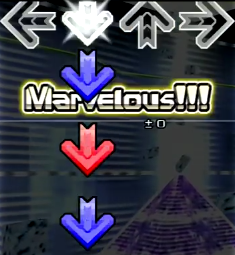
SPINS
A spin is pretty self-explanatory. They are patterns that make you spin! However, they are also difficult to identify at first glance. Spins usually make you turn at least 180 degrees, facing away from the screen. For example, Left Down Right Up Left is a spin. Most spins are double-stepped as performing them as intended would throw off your balance. However, they are fun to try, but be careful to not hurt yourself.
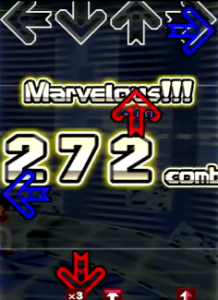
STREAM
A stream is a long sequence of steps, usually lasting for at least a whole measure. Streams typically consist of back to back 1/8th notes or 1/16th notes while alternating feet for each step. Depending on the speed of the music, streams can be very difficult to keep up with due to the density of notes. Pay close attention to how the notes are spaced out and focus on the quarter beats while keeping the rhythms even.
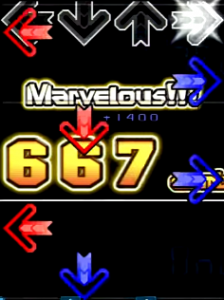
DOUBLE-STEPS
When it comes to crossovers and spins, most players starting out will perform those patterns as double-steps. A double-step is when you use one foot to hit two different consecutive arrows. For example, using your left foot to hit Down and then Left. This is usually done to preserve balance by keeping the body facing the screen, or because the player is not familiar with certain patterns in a chart. Often times charts with crossovers and spins are difficult to sight read and may require a few playthroughs to nail the patterns. Exceptions are when charts intentionally uses double-stepping patterns, but it is hard to tell whether or not they are actually crossovers that lead into a sensible pattern.
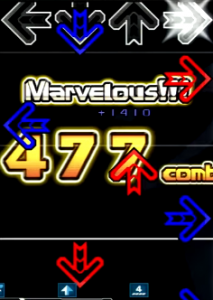
As you play more, you will be able to identify these patterns and put everything together as you climb the difficulty ladder. Keep practicing these patterns and someday you’ll become a dancing master.

